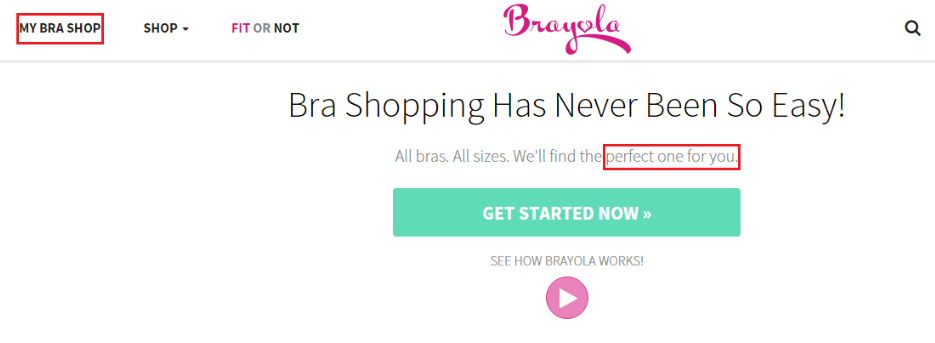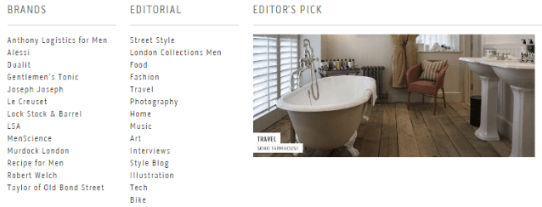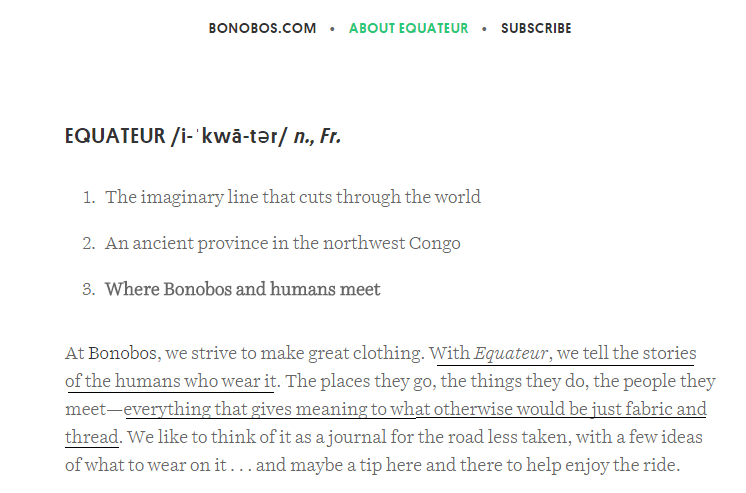Why are some businesses able to create more online conversations and get people to share their products on social media all day? How do these businesses get customers coming back time after time to spend more on their products? Sure, having money helps these fruitful businesses, but the truth is that the best of the best – both online and offline – are able to stay relevant and profitable thanks in large to the existence of a brand community.
What is a brand community? A brand community is a group of consumers that engage with the brand, and with their fellow consumers to constantly discuss aspects related to the brand. In short, a brand community is “formed on the basis of attachment to a product or marque” (source).
Why Create a Brand Community?
The easy answer (and the best one) is that a vibrant, and engaged community (one that gets your customers to constantly talk about you) is probably the best unique selling proposition (USP). Having an irreplaceable USP is the backbone to any successful business (B2B or B2C). Entrepreneur.com defines the unique selling proposition as, “The factor or consideration presented by a seller as the reason that one product or service is different from and better than that of the competition.”
Your unique selling proposition is something no one (or business) can take from you. Low prices can be taken from you tomorrow. “Made in [your hometown]” can be taken tomorrow. A community for and by the people cannot be taken.
A brand community, when done correctly, can also lead to all of the following.
- Increase in word of mouth promotion (community members act as brand ambassadors)
- Lead to tons of user generated content
- Create more trust (when you put yourself out there, you show
- Better brand loyalty (repeat customers, higher average order value and lifetime customer value)
- More social media interactions
- Increased brand visibility
5 Steps to Building the Best Brand Community Ever
1. Know Thy Customers
This goes without saying, and is a task that you must undertake if you are going to build a business that lasts beyond the next few weeks. Remember those cool phones made by Blackberry? Today, the brand as a whole is a thing of the past because they assumed they knew what customers wanted (and you know what happens when you assume things).
How do you get to know customers? Here are a few questions that can help you better understand what your customers dig.
- What is your most popular product?
- What is your most popular product amongst repeating customers?
- Use Google Analytics to understand what pages people are staying on and what pages they can’t stand.
- Use online tools, such as Similar Web, Google Webmaster Tools, Facebook Audience Insights, and others to take a peek at where your customers are coming from and who else they visit.
- Conduct a bit of market research to understand trends and needs (hint: use Reddit and Quora).
- Email your most loyal customers. Seriously send an email to three to four customers every day.
If you want to go deeper into the understanding of who your customer is, check out our guide on creating a buyer persona. It’s well worth five minutes of your time!
Cards Against Humanity is an excellent example of a webstore created while taking their customers’ state of mind into consideration. The site is simple. The text is whacky.

Bottom line: Know who your customers are and what they like/dislike. Use that information to create a better experience on your site, and use that information in each of the following steps.
2. Create a Message and Position Your Brand
Once you know what your customers like about your brand and niche, you can now create a message that positions your brand in the “right” light. For instance, Brayola, an eCommerce business that caters to women, positioned themselves as a very personal outlet to purchase bras that fit each woman’s needs. How did they position themselves in that light? The company pushes the right messages:
- “Beauty comes in ALL sizes, shapes, ages & colors!”
- “Bra shopping made simple, and fun!”
- “My Bra Shop”
- “All bras. All sizes. We’ll find the perfect one for you.”
These are just some of the messages that you’ll stumble upon while visiting Brayola. They drive the point home so that when someone says “Brayola” everyone immediately thinks “personal”. Notice that they don’t try to position themselves in multiple lights (personal, cost-effective, etc.), rather they use multiple variations of one message to effectively communicate their brand position to customers: a “personal” experience. All the rest falls into place.

Like Brayola, you must find a core position (value or emotion) that you create your brand’s messages around. That position then needs to be communicated effectively to your customers on a constant basis – both on and off your website.
Another great example is ThinkGeek. As the name implies, ThinkGeek is all about being “geek”, or in other words, don’t fear being yourself. When visiting their site you won’t forget for even a split-second that this is the home for geeks. It’s a constant and positive message for their customers (that are sometimes shunned for being geeks).
Bottom line: Don’t try to shoot off 101 different positions for your brand. Create the position, communicate that position, and then continue to the next step (Example: Brayola → The personal bra experience).
3. Use Emotion
There are no communities around robots. People love Nike because of the emotion (motivation, will power) that they trigger. Coca Cola keeps winning (even though we all know how unhealthy it is) because they work 24/7 to make you smile. I could go on and on (like the energizer bunny) forever naming companies that have created a community around their brand through the use of emotional triggers (and not buy selling product features).
Aside from emotion being able to improve your conversion rates, emotion is even more effective at bringing people together! The best example are our social media networks. From Instagram, to Pinterest, Snapchat, and live streaming apps, people are drawn together from different corners of the world (yes I know the Earth is a circular) because of emotions.
These people are not just commenting on pictures from top models or athletes. They’re engaging in conversation on everything that brands are doing – from the good, to the bad, and the ugly. Both Lowe’s and Benjamin Moore are great examples of brands that feed off social interactions with their Pinterest group boards full of user generated content!
User generated content is not just for the big brands. Case in point, Angelus Direct. They have created a community of shoe polishing gurus that don’t skip an opportunity to share their artwork. The team behind Angelus Direct has encouraged the sharing, and as a result they’ve created a small community of their own.
This Facebook post makes no mention of their product and does not even link to the site. All they do is leverage user generated content (99% of their content is UGC).
Peep the details on these. by ABOVE AVRGE CLSCK#angelusdirect
Posted by Angelusdirect.com on Sunday, January 3, 2016
Each shoe design evokes the emotion – whether good or bad – of a fellow polisher. That’s their goal. Whether someone loves it or hates it, they’re going to talk or act on what they see because Angelus Direct has made their customers’ content a constant emphasis in their business strategy.
Bottom line: No one (yet) buys from bots. We buy from brands that add emotion to their brand, products, and the entire shopping experience. Do that, and your brand community will start to branch out.
4. Create Unique Content
Content is king and the king rules the kingdom. We’ve spoken about the eCommerce brand Beardbrand numerous times. Each time we’ve spoken about them, it’s been about how they created awesome video content for men with beards.
They created videos before they even had a product! The feedback and conversations that launched around their first pieces of content were what made them understand that adding a product line was the obvious next move.
You’ve already got products, so you may think that it’s too late to create a brand community. Another example of using content to create a community is Coggles. Coggles is a premium international fashion retailer home to over 200 men’s and women’s designer collections from established fashion houses, emerging designers and rare international labels.
I’m not a Coggles customer, but after stumbling across their blog, I probably spent close to half an hour in awe at some of what they were sharing, and I’ll be darned if I don’t go back a second time to check out a few of their products (I’d like to do that now, but this post needs to get written :)).

Any eCommerce business that’s able to use their brand community to generate growth is a brand that is constantly active in engaging its customer base. Like any relationship, there is give and take. Your job (for your brand) is to give great content.
Ideally, each time a customer returns, there is something new, whether it’s lifestyle related (for your customers), alternative product use, user generated content, comical video clips, or fresh action shots of you and the team hard at work.
When it comes to creating content, just as important as the topic of your content is the medium on which the content will be portrayed. Take a second to think which one (or ones) is right for your customers: video, podcast, photography, infographics, gifs, or written content (online or print). Don’t pick what works for you. Pick the medium that will increase the excitement around your brand.
Bottom line: Content is King. For your content to be king for your customers, you need to create fresh, relevant content on the right medium. Think about customer needs, and then act.
5. Empower Your Community Members
When building your brand’s presence – with your brand’s positioning, emotional triggers, and content – you are in essence writing a story. That story has thousands of main characters: your brand, the employees, and the customer base. All that comes together to create a thriving community when you add a place for a free flow of thoughts and ideas. Enable everyone to take part.
Heard of Bonobos? Let’s take their online magazine Equator for example. Equator is a blog dedicated to telling the story behind the people that wear their fabric. As they say themselves, “With Equator we tell the stories of the humans who wear it”.

In doing so, they humanize their brand and tell neverending stories that go beyond their product line. All this is done just by empowering their customers to be more than just people that click “buy”.
To turn that presence into a community of brand ambassadors and repeat purchasers you need to empower customers – just like Bonobos (business is thriving for them).
At the end of the day, the brand’s greatest marketing voice are the customers (through the good and the bad, just like kids). Your task is to listen to them.
Creating a Space to Talk
First of all, create a space somewhere on the net, aside from your posts, to enable customers to talk between themselves. No coding or money is needed to create this. A few simple options to build a brand community are either a Facebook group, a Subreddit, or to create a Slack community. Alternatively, this is also something that can be added to your site if you have someone tech savvy that can help you out. Which one is right for you? The one that is most convenient for your customers.
After spending a bit of time building it up, you can relinquish control and free up more time in your day to do other things. Let’s repeat – you do not need to be the guard dog that checks every post. The point of the community is to allow discussion.
Transparency is a good thing, and it builds trust. People will talk about your brand in any case, so wouldn’t you want it under your “roof”? Research has also shown that negative reviews and feedback can still convert leads into customers so have no fear.
Bottom line: Create a corner on the internet for your customers to discuss everything related to your brand and products. Be open, and don’t try to control the conversations.
Time to Build Your Brand Community
Once you’ve built your community, you won’t have to continue begging for love. Love will be in the air for your brand as if it’s brand appreciation day (which does not exist).
The first four steps outlined in this post should not be news to you. These are tasks that you should be undertaking in any case to build an empire. The fifth step – implementing a space to converse – is the new step, and one that will ultimately make your brand a household name in your niche. Follow through on these tips, and it’ll be a matter of time before you’ve got a brand community as strong and loving as the Brady Bunch.

Ty is a digital marketing enthusiast that can't get enough social media marketing and content marketing. He is the inbound marketing manager at StoreYa where he spends his days searching for the newest social marketing scoop and creating amazingly awesome content. If you’d like to chat with him, feel free to connect with him on any social platform.
Recommended articles
 Facebook Ads for eCommerce: 16 Strategies, Examples & Tips
Facebook Ads for eCommerce: 16 Strategies, Examples & Tips
 How to Build a Winning eCommerce Ads Strategy
How to Build a Winning eCommerce Ads Strategy
 Google Ads for eCommerce: Everything You Need to Know
Google Ads for eCommerce: Everything You Need to Know
 10X Your Traffic with PPC Management Software
10X Your Traffic with PPC Management Software
Comments
Powered by Facebook Comments


